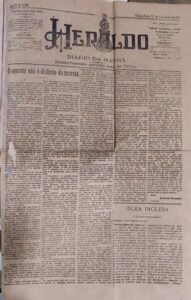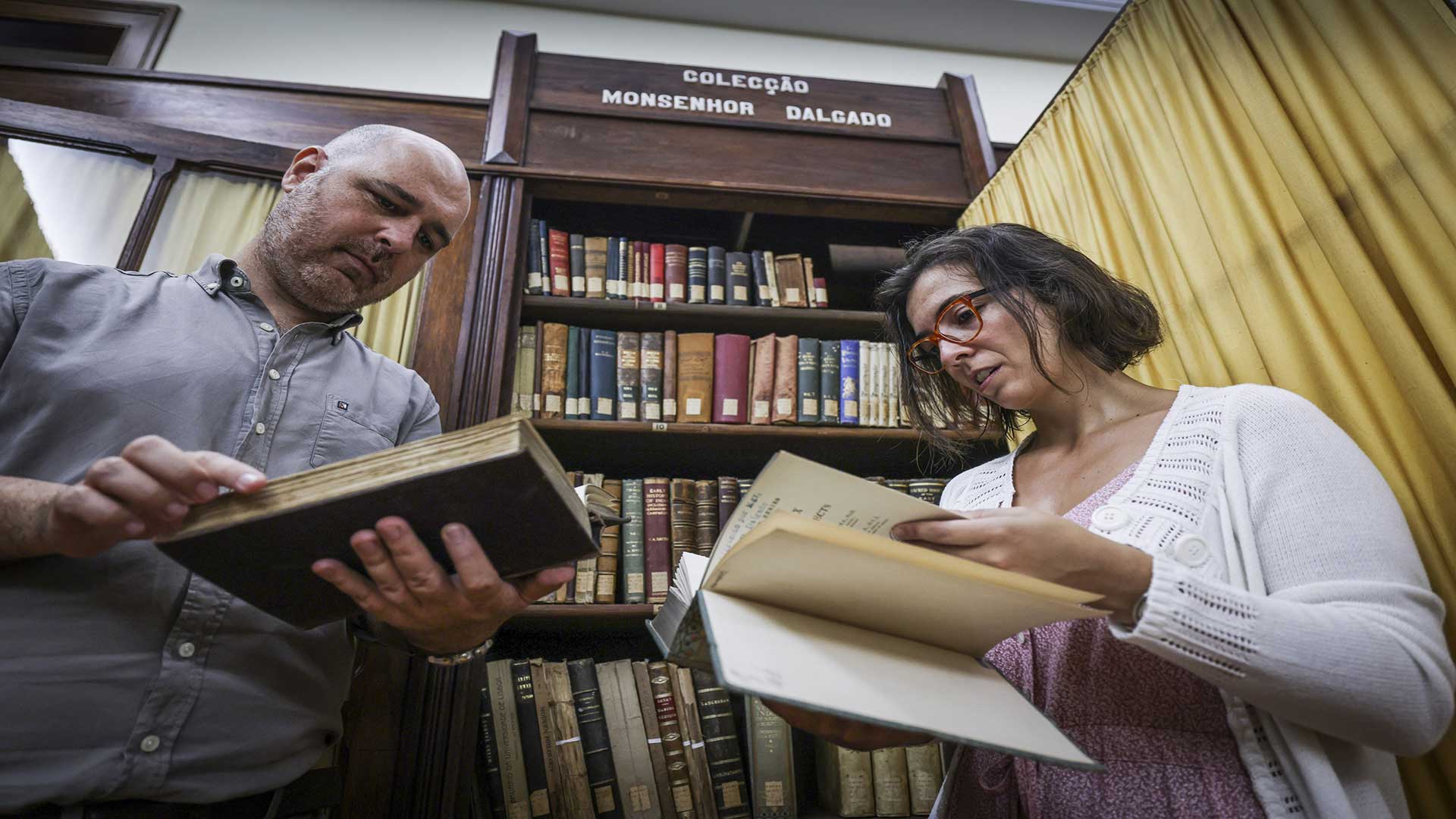Dalgado and the Konkani-Marathi Controversy
In 1917, Monsignor Sebastião Rodolfo Dalgado (1855-1922), an internationally renowned linguist and professor of Sanskrit at the University of Lisbon, analysed the linguistic and grammatical characteristics of the Konkani language, demonstrating its identity as being distinct from Marathi, in a series of nine articles, entitled “Konkani is not a dialect of Marathi”, published in the Panjim daily Heraldo[1].

What were the events that led Mgr. Dalgado to write the series?
Mgr. Dalgado was deeply aware of the pioneering linguistic, lexicographic and literary work systematically put in by European missionaries, mainly in the Roman script, in sixteenth and seventeenth century Goa;[2] sadly, Konkani studies began to languish side by side with the waning of religious zeal in the eighteenth century, which included the Pombaline period. However, even before that, indifference had turned into official hostility. An edict issued in the year 1684, by Viceroy Francisco de Távora, and some other state and ecclesiastical orders, sacrificed Konkani at the altar of Portuguese, which hereafter became the official vehicle of communication. A few Goan Catholic families began to regard Portuguese as their mother tongue, while the Hindus sought refuge in Marathi, which they used for religious and cultural purposes.
Notwithstanding the relegation of Konkani to the background, there was never a doubt about its linguistic status until, on the academic front, a Scottish linguist and poet, John Leyden, working in British India, unwittingly upset the apple cart. In his essay on Indian languages, in 1807, he classified Konkani as a dialect of Marathi, specifying that “the jargon of Goa” differed considerably from pure Konkani. A decade later, Baptist missionary William Carey’s translation of the Bible at the Serampore Mission was a shot in the arm for Konkani. However, it is Leyden’s ideas that began to gain currency, supported by another British missionary linguist John Wilson; the latter eventually came into the Konkani fold and his pupil J. M. Mitchell kept the flag flying, but contemporaries like writer Richard Burton, orientalist Erskine Perry, judge R. X. Murphy, civil servant John Beames and Sanskrit scholar A. C. Burnell were racked with indecision.
In Goa, the exclusion of Konkani from the curriculum of the first state-owned schools set up in 1831 demoralised Konkani speakers a great deal. Thankfully, there appeared light at the end of the tunnel when, in 1858, Goa Secretary-General J. H. da Cunha Rivara published an Ensaio histórico da língua concani.[3] He was enthusiastically supported by novelist and parliamentarian Francisco Luís Gomes and researcher Miguel Vicente de Abreu. However, the restoration of Konkani’s pride was short-lived, for in 1869, at the behest of the official Marathi interpreter Suriagy Ananda Rao, the use of the language was banned by José Ferreira Pestana, the Governor notorious for dismantling the old city of Goa. There was no question of its use in academic circles, whereas Marathi ruled the roost even at the prestigious lycée in the capital city.
As though to further dismantle Konkani, in 1877, Bombay-based academic R. G. Bhandarkar termed it a dialect of Marathi.[4] By this time, the number of scholars favouring the dialect theory had slightly outnumbered those holding the language theory; but the tide began to change after Goan scholar José Gerson da Cunha’s convincing response, The Konkani Language and Literature, saw the light of day in the said metropolis, in 1881.[5] He was the first to systematise and coordinate the arguments of the language theory and ought to have drawn stout torchbearers to the cause; but alas, at least three supporters – the Mangalore-based Italian Jesuit Angelo Maffei, Bombay-based writer R. B. Gunjikar and Mangalorean jurist Jerome A. Saldanha – were somewhat conciliatory. A stronger blow was yet to come by way of G. A. Grierson’s Linguistic Survey of India, whose seventh volume dedicated to Marathi, worked on by Norwegian scholar Sten Konow, was published by the British Government in 1905.
By and large, British India scholarship had hitherto favoured Marathi, but Konkani’s defenders in Goa were determined to not take it lying down. In that very year, Goan mestizo poet Fernando Leal began a crusade for the “resurrection of Konkani”,[6] close on the heels of another, Thomaz Mourão Garcez Palha, who had also worked hard. Writer Eduardo Bruno de Souza[7] in Poona, and Cristóvão Pinto, writer and parliamentarian, in Goa, followed suit;[8] and the ayurvedic physician Ramachondra Panduronga Vaidia, alias Dadá Vaidia, spoke in Konkani at Portuguese India’s first Provincial Congress, held in April 1916. He had made his point but was shouted down by Marathi writer Xambá Suria Rao Sardesai, who followed it up with a two-part article entitled “Ressurreição do concani”[9], obviously hinting at Leal’s clarion call issued a decade earlier.
The stage was set for Sebastião Rodolfo Dalgado to intervene from distant Lisbon. The tireless Goan Catholic missionary was now on a new mission: to prove Konkani’s credentials as a language. He had published a Konkani-Portuguese dictionary in Bombay,[10] and a Portuguese-Konkani volume in Lisbon.[11] The university professor and Fellow of the Portuguese Academy of Sciences was an authority on the influence of Portuguese on Asian languages, but his thoughts kept returning to Konkani. Significantly, one of his last works was a Konkani Grammar, which until recently lay in manuscript form at Goa’s State Library.[12]
Dalgado’s authoritative voice in Heraldo (Figure 1) helped put to rest issues that were plaguing Konkani ever since Leyden’s ignorance of Konkani’s grammatical structure had led him to question its linguistic independence.[13] However, as José Pereira points out in his Konkani: A Language,[14] “because of its language and limited circulation”, his nine-part series “remained unread by the majority of those who could have profited by it.”[15] Today, its translation into English (see Document in this issue) hopes to right that historical wrong and pay homage to that rare scholar whose centenary was observed last year.
Bibliography
da Costa, Aleixo. Dicionário de Literatura Goesa. 4 volumes. Macau/Goa: Fundação Oriente/Broadway, [1997-2005]
Dalgado, [Sebastião] Rodolfo. “O concani não é dialecto do marata”, in Heraldo (Pangim, Goa), Nos. 2570 to 2576, dated 13, 14, 15, 16, 17, 18 and 22 February 1917.
Gomes, Olivinho. Konkani Literature in Roman Script. A Brief History. Goa: Dalgado Konknni Akademi, 2010.
Mascarenhas, Constâncio. “Defesa da língua concani”, in Boletim do Instituto Menezes Bragança, Bastorá: Tipografia Rangel, 1966.
Pereira, José. Konkani Literature: A History of the Konkani-Marathi Controversy. Dharwar: Karnatak University, 1971
SarDessai, ManoharRai. A History of Konkani Literature (from 1500 to 1992). New Delhi: Sahitya Akademi, 2000.
Endnotes
[1] “O concani não é dialecto do marata”, in Heraldo, nos. 2570 to 2576, dated 13, 14, 15, 16, 17, 18 and 22 February 1917.
[2] Among others, Henrique Henriques; Thomas Stephens; João de S. Matias; Gaspar de S. Miguel; Simão Álvares; Karel Prikryl; Diogo Ribeiro, António de Saldanha, Miguel de Almeida, Ignazio Arcamone and Diogo de Amaral.
[3] Nova Goa: Imprensa Nacional, 1858.
[4] Wilson Philological Lectures on Sanskrit and the Derived Languages. Bombay: 1914.
[5] Bombay: Government Central Press, 1881
[6] Cf. “Glossário Português Oriental”, in Heraldo, no. 1562, 24 May 1905. Parts 2 and 3 appeared on 25 May and 10 June 1905.
[7] Founder-editor of the first periodical in Konkani, Udenteche Sallok, published from Poona, 1889-1894, he also wrote a series of articles on Konkani, in O Heraldo.
[8] Cf. his articles in Heraldo, August-October 1916.
[9] Heraldo, nos. 2336, 2337, 28-29 April 1916.
[10] Diccionario komkani-portuguez filológico-etymologico. Bombay: 1893.
[11] Diccionario portuguez-komkani. Lisboa: Imprensa Nacional, 1905.
[12] Mousinho de Ataíde and Cristo de Menezes (co-translators and co-editors), Grammar of Konkani Language. Goa: Broadway Publishing House, 2022.
[13] Mgr. Dalgado’s legacy was kept alive by another scholar, Dr Mariano Saldanha, who was a professor of Sanskrit at the University of Lisbon (1929-46), and later, of Sanskrit and Konkani at the Escola Superior Colonial (1946-48). Unlike Dalgado, who favoured the writing of Konkani in the Devanagari script, Saldanha was a votary of Konkani in the Roman script and wrote extensively on the language particularly after the latter period.
[14] José Pereira, Konkani: A Language. Dharwar: Karnatak University, 1971.
[15] Ibid., p. 53
First published in Revista da Casa de Goa, Series II, Sep-Oct 2023, pp. 16-19
Banner: https://rb.gy/egohs
